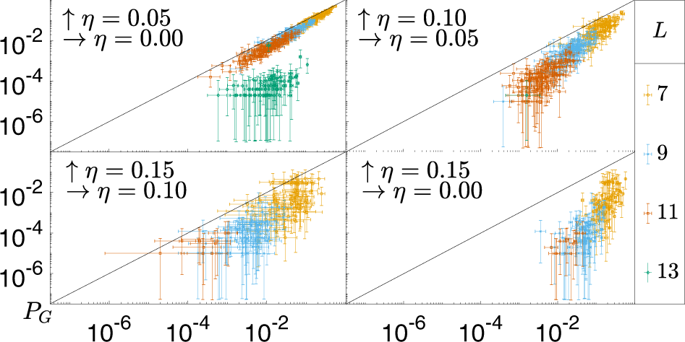npj Quantum Information ( IF 7.6 ) Pub Date : 2019-11-28 , DOI: 10.1038/s41534-019-0210-7 Adam Pearson , Anurag Mishra , Itay Hen , Daniel A. Lidar

|
Quantum annealing has the potential to provide a speedup over classical algorithms in solving optimization problems. Just as for any other quantum device, suppressing Hamiltonian control errors will be necessary before quantum annealers can achieve speedups. Such analog control errors are known to lead to \(J\)-chaos, wherein the probability of obtaining the optimal solution, encoded as the ground state of the intended Hamiltonian, varies widely depending on the control error. Here, we show that \(J\)-chaos causes a catastrophic failure of quantum annealing, in that the scaling of the time-to-solution metric becomes worse than that of a deterministic (exhaustive) classical solver. We demonstrate this empirically using random Ising spin glass problems run on the two latest generations of the D-Wave quantum annealers. We then proceed to show that this doomsday scenario can be mitigated using a simple error suppression and correction scheme known as quantum annealing correction (QAC). By using QAC, the time-to-solution scaling of the same D-Wave devices is improved to below that of the classical upper bound, thus restoring hope in the speedup prospects of quantum annealing.
中文翻译:

量子退火中的模拟错误:厄运与希望
在解决优化问题方面,量子退火有可能提供比传统算法更快的速度。就像任何其他量子设备一样,在量子退火器实现加速之前,必须抑制汉密尔顿控制误差。已知这样的模拟控制误差会导致\(J \)-混沌,其中,获得最佳解的概率被编码为预期的哈密顿量的基态,其取决于控制误差而变化很大。在这里,我们显示\(J \)-混沌会导致量子退火的灾难性失败,因为求解时间度量的标度变得比确定性(穷举)经典求解器的标度差。我们使用随机的Ising自旋玻璃问题在两个最新一代的D-Wave量子退火仪上进行经验证明。然后,我们继续显示可以使用称为量子退火校正(QAC)的简单错误抑制和校正方案来缓解这种世界末日的情况。通过使用QAC,相同D-Wave器件的求解时间缩放比例提高到了经典上限以下,从而恢复了量子退火加速前景的希望。


























 京公网安备 11010802027423号
京公网安备 11010802027423号